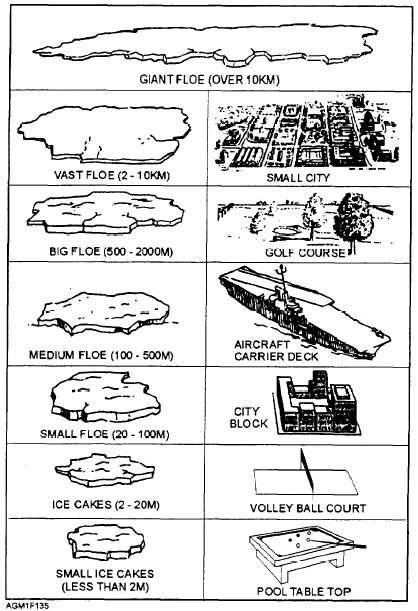Figure 1-35.—Sizes of sea ice.
Topography of Sea Ice Sheets
In addition to separating pieces of sea ice from the
fast ice by pulling it apart, the winds and currents may
also push on fast-ice sheets, causing stress budges or
stress ruptures in the surface with portions of the sheet
overriding other sections. Many of these stress-induced
features are identified by specific terms that describe
the topography, or configuration of the ice surface.
These terms are related to the degree of ice-surface
roughness. Figure 1-36 illustrates the types of
topography.
RAFTED ICE.—This type of topography occurs
when ice cakes override one another. Rafting occurs
when wind forces ice cracks or ice floes together. It is
associated with young and first-year ice. When the
rafting process is occurring, there is great compression
within the ice sheet. Ships should avoid operations in
any opening in the ice in an area where rafting is
occurring, because it indicates the ice is closing in
rapidly.
RIDGED ICE.—Ridged ice is much rougher than
rafted ice and occurs with first-year ice. Wind and
weather eventually smooth the surface of the ridges.
HUMMOCKED ICE.—Hummocking occurs
with old ice. It is defined as ice piled haphazardly into
mounds or hillocks. At the time of its formation,
hummocked ice is similar to rafted ice; the major
difference is that hummocked ice, because of its
thickness, requires a greater degree of pressure and
heaping.
1-52


